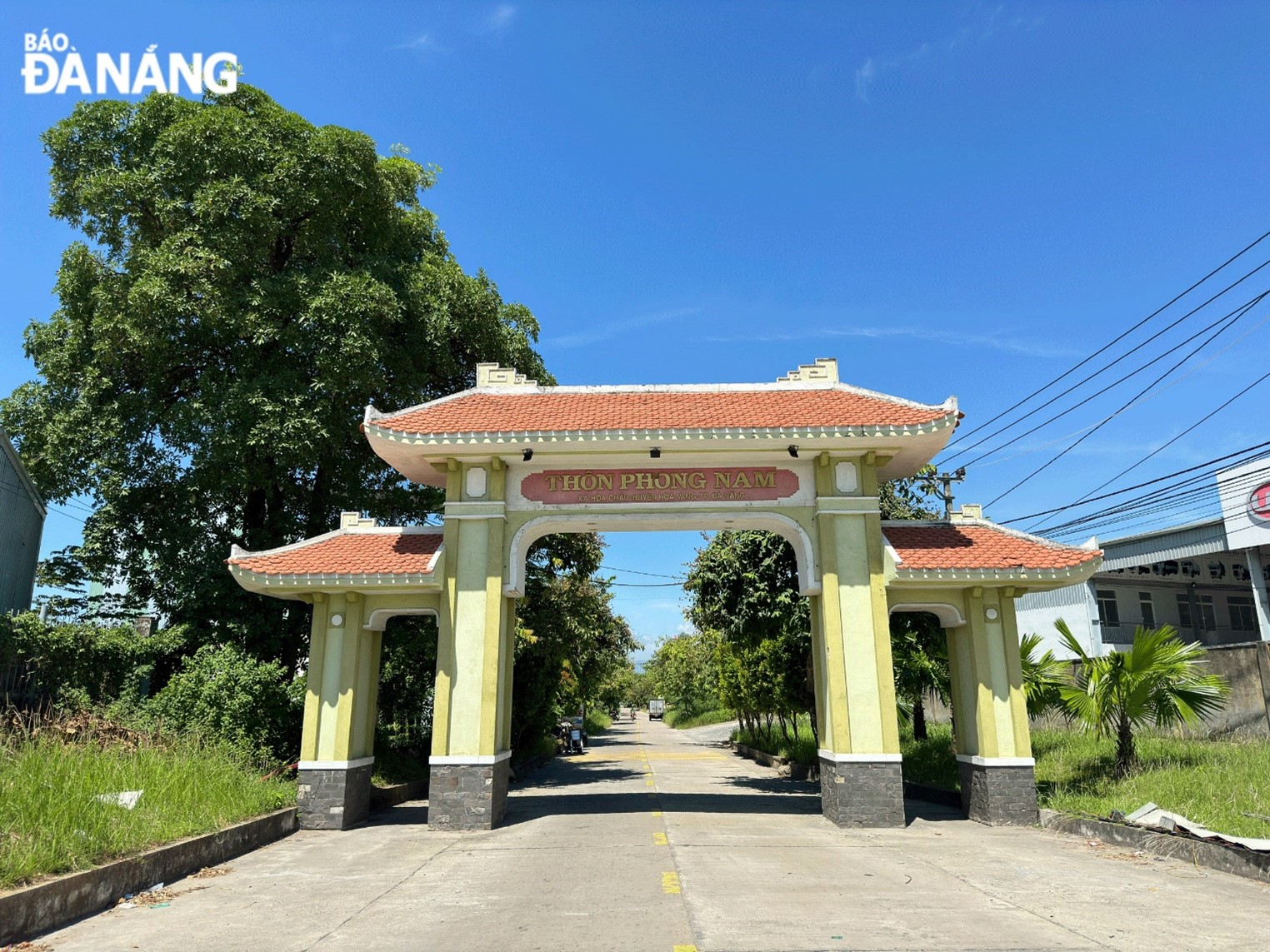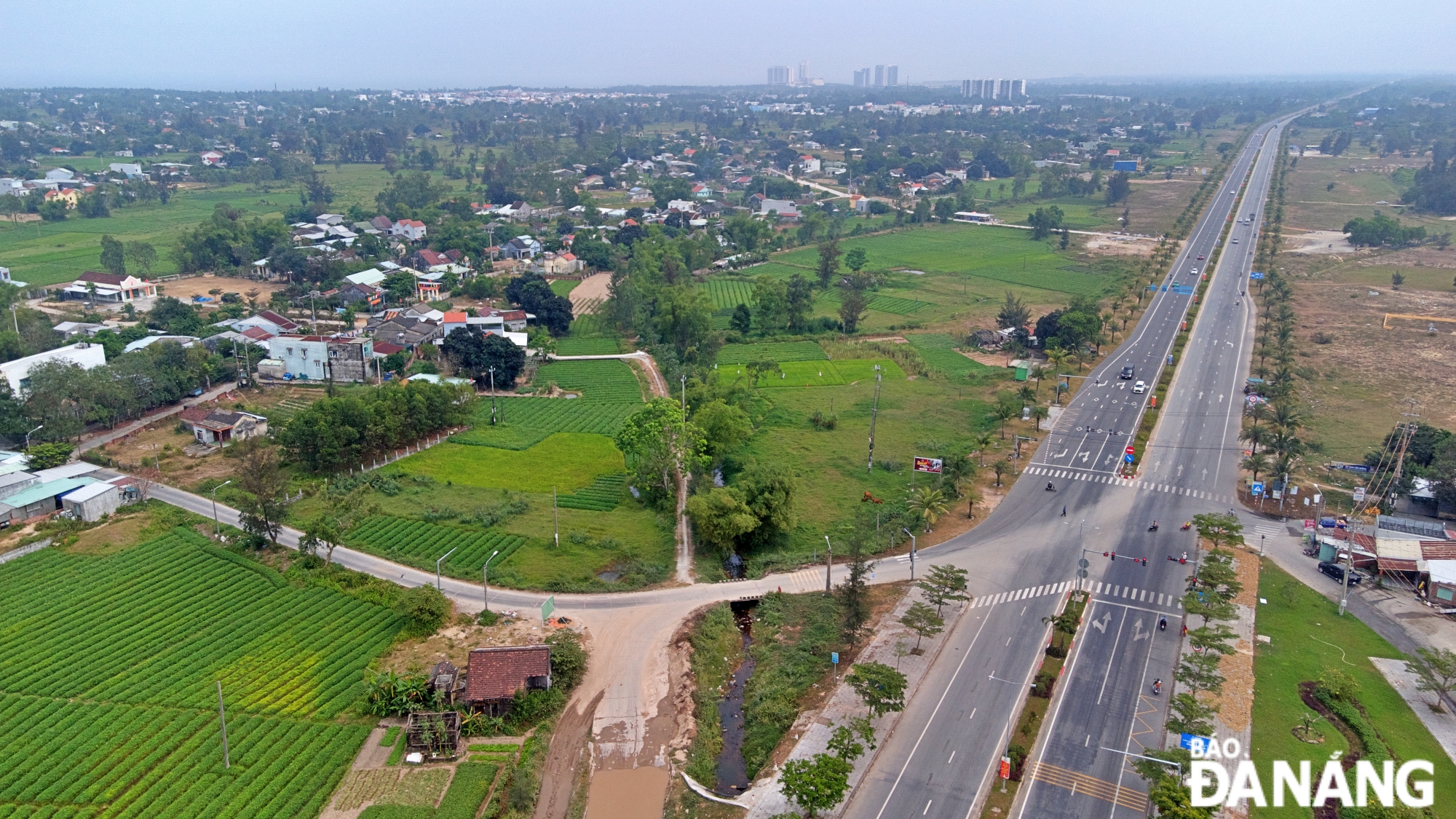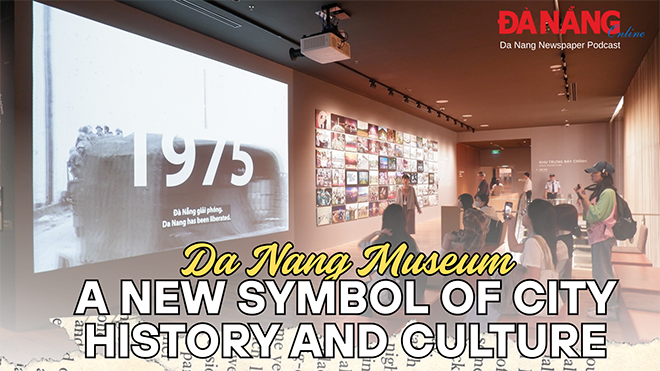Come and Hear the Story of "Protecting the Village"
Many workshops related to preserving and promoting the values of historical and cultural heritage have been organized in Hoa Vang district as part of the effort to develop this area into an eco-friendly urban space rich in identity. While there are concerns that cultural values may fade in the face of urbanization, some believe that Hoa Vang could become an attractive destination in the future by balancing cultural preservation with economic development.
 |
| The entrance to Phong Nam village, where the "Distinctive Cultural Village" will be established in Hoa Vang in the near future. Photo: T.Y. |
A land of history and culture
As Hoa Vang faces the opportunity to develop into an urban area, local people are concerned that the new development might erase the memories of rural life and the traditional cultural values passed down through generations. However, this concern was somewhat alleviated when Hoa Vang District Party Standing Committee announced the resolution on "Preserving and Promoting the Historical and Cultural Heritage in Hoa Vang District until 2030, with a vision toward 2045", followed by a recent proposal to establish a "Distinctive Cultural Village" in the two villages of Phong Nam (Hoa Chau Commune) and Bo Ban (Hoa Phong Commune).
Pointing to Phong Le Communal House (also known as Than Nong or Muc Đong Communal House), Mr. Ngo Tat Hien (72 years old), the Head of Phong Le Village in Nam Phong, shared that Phong Le Village was founded in the 14th century and is home to the only Muc Đong Festival in the country. Over the years, this ancient village has preserved its distinctive features with green bamboo groves, old banyan trees, ancient village wells, and timeworn rooftops. Along with the goal of preserving and promoting cultural and traditional values, while improving the material and spiritual lives of local people, Mr. Hien hopes that newly constructed buildings will blend harmoniously with the atmosphere of the ancient village.
Like many other residents of Phong Nam Village, Mr. Hien proudly talks about Muc Dong Festival, where traditional values and folk memories are vividly brought to life, reflecting the customs and ways of thinking that have been passed down through generations. From folk games to the rituals dedicated to the God of Agriculture (Than Nong), the festival evokes images of farmers connected to their buffaloes, rice fields, and ancient customs. Mr. Hien believes that the festival is not only a form of preservation but also an opportunity to connect the younger generation with the cultural flow of the village, fostering a sense of love and pride for their roots and homeland.
"Each communal house, bamboo hedge, and historical relic is a witness to history, a foundation of our village and our people. No matter how much urbanization progresses, we only hope that these values will remain preserved in their entirety", Mr. Hien hopes.
To achieve the goal of preserving the cultural heritage of the villages, Hoa Vang has taken careful and sustainable steps in its development process. In particular, with the implementation of the "ecological city with rich cultural identity" model, residential areas are encouraged to maintain village lifestyles through community cultural activities. In addition to the restoration and preservation of old architecture, every new building or structure must meet the criteria of harmony with the surrounding landscape. Many individuals suggest that, to preserve its identity, the local government needs to focus on defining its unique values through the preservation of traditional festivals, restoration of historical sites, communal houses, pagodas, and customs that have been passed down through generations.
"We must ensure that people know Hoa Vang not only as an ecological city but also as a land rich in history and culture. Shaping and introducing local culture will provide the community with the confidence to preserve and promote these age-old values", said Vo Van Hoe, a researcher and the Head of Association of Vietnamese Folklorists in Da Nang.
The key touchpoints in urban planning
|
"I believe that in the future, Hoa Vang will be a model of an urban area that does not lose its roots, but instead, it will continue to preserve its unique cultural and historical heritage while its development". To Van Hung, the Secretary of Hoa Vang District Party Committee. |
Mentioning this point, To Van Hung, the Secretary of the Hoa Vang District Party Committee, affirmed that in the overall planning, Hoa Vang has chosen the model of "an ecological urban area rich in identity", with a determination to provide the best quality of life for local people, from infrastructure and ecosystems to the preservation and promotion of cultural and traditional values, following the structure of "village within the city, city within the village". By 2025, it is expected that the district will have an urbanization rate of over 85%, and about 80% of its communes will meet the requirements to become wards. Particularly, this area will develop into an urban area by inheriting the distinctive values of agriculture and rural life, while reserving space for village culture and traditional values.
It can be said that the strong awareness of origins, the respect for historical and the cultural village values are key factors that make Hoa Vang so captivating. According to Associate Professor Dr. Nguyen Anh Tuan, the Head of the Architecture Department at University of Science and Technology (University of Da Nang), urban architecture and spaces can only achieve a unique identity if they possess practical features that align with the local context. Specifically, Hoa Vang needs to form an architectural space based on the urban model it is aiming for, which focuses on typical elements and reflects the character and culture of the land. New urban spaces must integrate "materials" rooted in local life, such as gardens, rice fields, and village spaces that are preserved and promoted in the contemporary context.
The restoration of heritage, especially private legacies like ancient houses, village communal halls, and shrines, plays a vital role in creating a living space that balances modernity with unique cultural identity. Urban planning must prioritize minimizing practices like lot subdivision and property fragmentation that disrupt traditional village spatial structures, damage ecosystems, and harm the natural environment.
According to the orientation, the model of “ecological urban area rich in identity” in Hoa Vang will focus on maintaining green space, traditional agricultural ecosystem, creating harmony between architecture and natural terrain. Green belts interspersed within urban areas not only regulate the atmosphere but also preserve the distinctive charm of the countryside.
According to the Secretary of the District Party Committee, urban planning in Hoa Vang will not merely create a modern environment but will also "tell" the story of the village through architectural details. From public buildings and parks to squares and roads, every element will be designed to reflect cultural identity, distilled and passed down through generations. In this context, the key question posed by local authorities is how to select and integrate old and new cultural values to "blend without losing identity". The process demands thorough evaluation, scientific approaches, and sustainable implementation.
In the process of making general planning proposals for communes and districts, traditional cultural structures are seamlessly integrated into urban development spaces, and become an inseparable part of the new urban functional areas.
"I believe that in the future Hoa Vang will be a testament to an urban model that does not lose its roots. On the contrary, the more it develops, the more it preserves its unique cultural and historical heritage", Mr. Hung elaborated.
Incorporating cultural elements into urban planning helps establish a unique identity while passing on cultural narratives across generations. The people in Hoa Vang hope that the "touchpoints" within the planning process will transform the area into a modern urban space that still retains the essence of traditional village culture. Achieving this balance would mean residents no longer have to choose between urban development and preserving their heritage—both would coexist seamlessly in a modern, culturally rich living environment.
Reporting by TIEU YEN – Translating by HONG VAN








